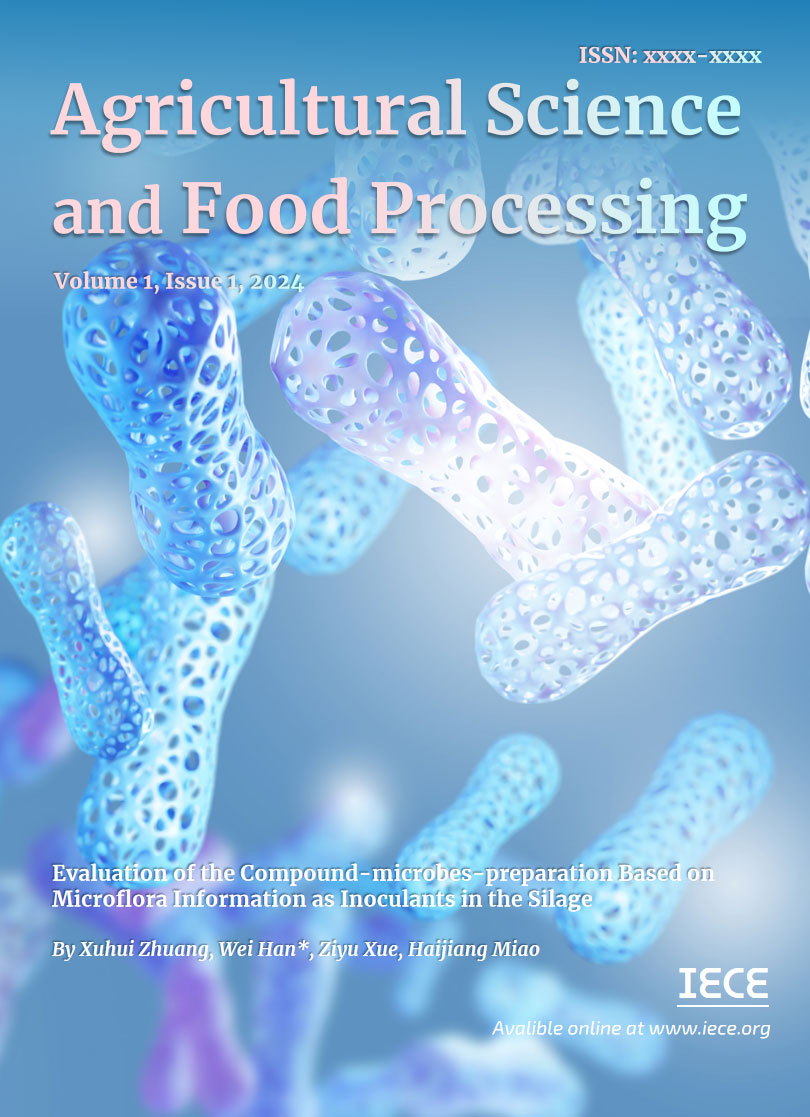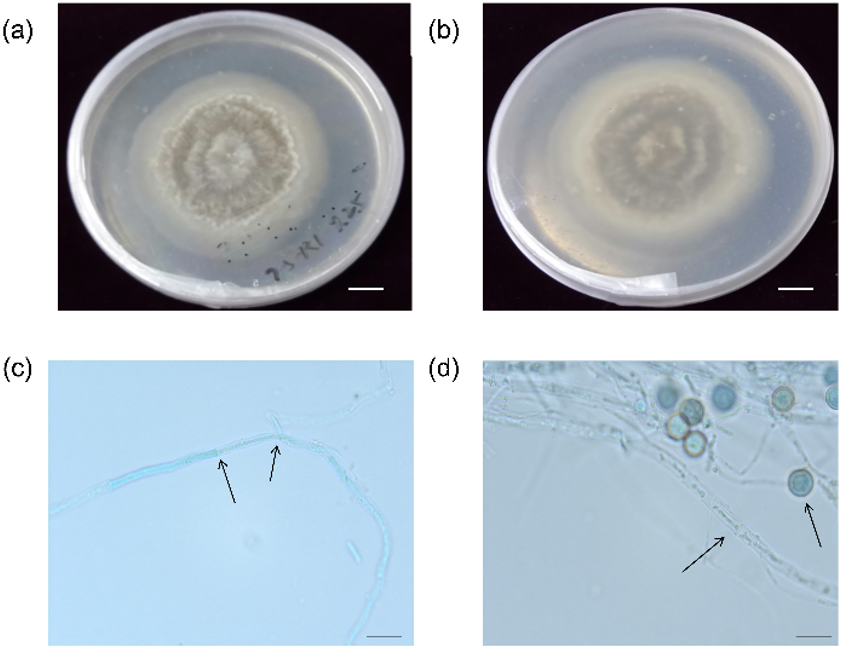Agricultural Science and Food Processing
ISSN: 3066-1579 (Online) | ISSN: 3066-1560 (Print)
Email: [email protected]


 Submit Manuscript
Edit a Special Issue
Submit Manuscript
Edit a Special Issue

[1] Vermunt, L., Sikkes, S. A., Van Den Hout, A., Handels, R., Bos, I., Van Der Flier, W. M., ... & AIBL Research Group. (2019). Duration of preclinical, prodromal, and dementia stages of Alzheimer’s disease in relation to age, sex, and APOE genotype. Alzheimer’s & Dementia, 15(7), 888-898.
[2] Alzheimer’s Association. (2019). 2019 Alzheimer’s disease facts and figures. Alzheimer’s & Dementia, 15(3), 321-387.
[3] World Health Organization. (2017). Global action plan on the public health response to dementia 2017–2025. World Health Organization.
[4] Ashraf, G. M., & Alexiou, A. (2019). Biological, Diagnostic and Therapeutic Advances in Alzheimer’s Disease. Springer Singapore.
[5] Roy, K. (Ed.). (2023). Computational modeling of drugs against Alzheimer’s disease (Vol. 203). Springer Nature.
[6] Ma, X., Tan, C., Zhu, D., Gang, D. R., & Xiao, P. (2007). Huperzine A from Huperzia species—An ethnopharmacolgical review. Journal of ethnopharmacology, 113(1), 15-34.
[7] Peng, Y., Jiang, L., Lee, D. Y., Schachter, S. C., Ma, Z., & Lemere, C. A. (2006). Effects of huperzine A on amyloid precursor protein processing and β-amyloid generation in human embryonic kidney 293 APP Swedish mutant cells. Journal of neuroscience research, 84(4), 903-911.
[8] Andrade, S., Ramalho, M. J., Loureiro, J. A., & Pereira, M. D. C. (2019). Natural compounds for Alzheimer’s disease therapy: a systematic review of preclinical and clinical studies. International journal of molecular sciences, 20(9), 2313.
[9] Yuan, H., Ma, Q., Ye, L., & Piao, G. (2016). The traditional medicine and modern medicine from natural products. Molecules, 21(5), 559.
[10] Ma, X., & Gang, D. R. (2008). In vitro production of huperzine A, a promising drug candidate for Alzheimer’s disease. Phytochemistry, 69(10), 2022-2028.
[11] Ferreira, A., Rodrigues, M., Fortuna, A., Falcão, A., & Alves, G. (2016). Huperzine A from Huperzia serrata: a review of its sources, chemistry, pharmacology and toxicology. Phytochemistry reviews, 15, 51-85.
[12] White, J. D., Li, Y., Kim, J., & Terinek, M. (2013). A Novel Synthesis of (−)-Huperzine A via Tandem Intramolecular Aza-Prins Cyclization–Cyclobutane Fragmentation. Organic letters, 15(4), 882-885.
[13] Flores-Bustamante, Z. R., Rivera-Orduna, F. N., Martínez-Cárdenas, A., & Flores-Cotera, L. B. (2010). Microbial paclitaxel: advances and perspectives. The Journal of antibiotics, 63(8), 460-467.
[14] Sang, X., Yang, M., & Su, J. (2020). Research on endophytic fungi for producing huperzine A on a large-scale. Critical Reviews in Microbiology, 46(6), 654-664.
[15] Ellman, G. L., Courtney, K. D., Andres Jr, V., & Featherstone, R. M. (1961). A new and rapid colorimetric determination of acetylcholinesterase activity. Biochemical pharmacology, 7(2), 88-95.
[16] Felsenstein, J. (1985). Confidence limits on phylogenies: an approach using the bootstrap. Evolution, 39(4), 783-791.
[17] Munro, H. N. (Ed.). (2012). Mammalian protein metabolism (Vol. 4). Elsevier.
[18] Saitou, N., & Nei, M. (1987). The neighbor-joining method: a new method for reconstructing phylogenetic trees. Molecular biology and evolution, 4(4), 406-425.
[19] Kumar, S., Stecher, G., & Tamura, K. (2016). MEGA7: molecular evolutionary genetics analysis version 7.0 for bigger datasets. Molecular biology and evolution, 33(7), 1870-1874.
[20] Cruz-Miranda, O. L., Folch-Mallol, J., Martínez-Morales, F., Gesto-Borroto, R., Villarreal, M. L., & Taketa, A. C. (2020). Identification of a Huperzine A-producing endophytic fungus from Phlegmariurus taxifolius. Molecular biology reports, 47(1), 489-495.
[21] Dong, L. H., Fan, S. W., Ling, Q. Z., Huang, B. B., & Wei, Z. J. (2014). Indentification of huperzine A-producing endophytic fungi isolated from Huperzia serrata. World Journal of Microbiology and Biotechnology, 30, 1011-1017.
[22] JU, Z., WANG, J., & PAN, S. (2009). Isolation and preliminary identification of the endophytic fungi which produce Hupzine A from four species in Hupziaceae and determination of Huperzine A by HPLC. Fudan University Journal of Medical Sciences, 445-449.
[23] Kang, X., Liu, C., Shen, P., Hu, L., Lin, R., Ling, J., ... & Liu, D. (2019). Genomic characterization provides new insights into the biosynthesis of the secondary metabolite huperzine a in the endophyte Colletotrichum gloeosporioides Cg01. Frontiers in microbiology, 9, 3237.
[24] Le, T. T. M., Hoang, A. T. H., Nguyen, N. P., Le, T. T. B., Trinh, H. T. T., Vo, T. T. B., & Quyen, D. V. (2020). A novel huperzine A-producing endophytic fungus Fusarium sp. Rsp5. 2 isolated from Huperzia serrate. Biotechnology letters, 42(6), 987-995.
[25] Li, W. K., Zhou, J. Y., Lin, Z. W., & Hu, Z. B. (2007). Study on fermentation condition for production of huperzine A from endophytic fungus 2F09P03B of Huperzia serrata. Chin Med Biotechnol, 2(4), 254-259.
[26] Shu, S., Zhao, X., Wang, W., Zhang, G., Cosoveanu, A., Ahn, Y., & Wang, M. (2014). Identification of a novel endophytic fungus from Huperzia serrata which produces huperzine A. World Journal of Microbiology and Biotechnology, 30, 3101-3109.
[27] Su, J., & Yang, M. (2015). Huperzine A production by Paecilomyces tenuis YS-13, an endophytic fungus isolated from Huperzia serrata. Natural Product Research, 29(11), 1035-1041.
[28] Wen-Xia, H., Zhong-Wen, H., Min, J., Han, Z., Wei-Ze, L., Li-Bin, Y., ... & Xiao-Feng, L. (2020). Five novel and highly efficient endophytic fungi isolated from Huperzia serrata expressing huperzine A for the treatment of Alzheimer’s disease. Applied Microbiologyand Biotechnology, 104, 9159-9177.
[29] Yang, X., Guo, H., Gao, X., Gao, F., & Wang, L. (2006). Studies on the secondary metabolism of endophytes YD-01 I. JOURNAL of CHINA PHARMACEUTICAL UNIVERSITY, 37(5), 479.
[30] Zhang, Z. B., Zeng, Q. G., Yan, R. M., Wang, Y., Zou, Z. R., & Zhu, D. (2011). Endophytic fungus Cladosporium cladosporioides LF70 from Huperzia serrata produces Huperzine A. World Journal of Microbiology and Biotechnology, 27, 479-486.
[31] Zhu, D., Wang, J., Zeng, Q., Zhang, Z., & Yan, R. (2010). A novel endophytic Huperzine A–producing fungus, Shiraia sp. Slf14, isolated from Huperzia serrata. Journal of applied microbiology, 109(4), 1469-1478.
Agricultural Science and Food Processing
ISSN: 3066-1579 (Online) | ISSN: 3066-1560 (Print)
Email: [email protected]

Portico
All published articles are preserved here permanently:
https://www.portico.org/publishers/iece/